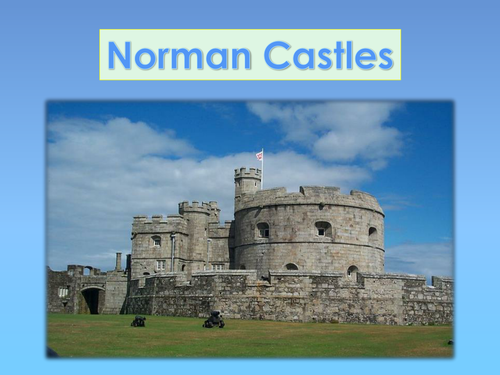

KS1/Y3 Powerpoint lesson (s) of 37 slides on the topic ‘Norman castles’.
Learning Objectives:
To use the correct historical vocabulary when talking about the features of a castle.
To compare the similarities and differences between motte and bailey and stone built castles.
To identify William the Conqueror , where he came from and his link to castles.
To use my knowledge about castles to make my own information book.
The slides are easy to follow and devised to encourage partner/trio discussion and collaboration through key questioning and small group activities. Slides 2-4 use pupil knowledge as a starting point assessment through a reflection activity. Slides 5-11 focus on William the Conqueror and include a paired map activity using atlases. Slides 12-20 look at early motte and bailey castles and include a short clip from Youtube. Included is a simple DT planning sheet for pupils to design then build a motte and bailey castle. Slides 21-23 encourage pupils to consider the purposes of castles in war and peace time. Slides 24-32 can be used as a castle features class quiz or a paired assessment. Slides 33- 36 look at famous castles belonging to Normans. The final slide offers a suggestion for making a ‘castle’ booklet or scrap book.
Learning Objectives:
To use the correct historical vocabulary when talking about the features of a castle.
To compare the similarities and differences between motte and bailey and stone built castles.
To identify William the Conqueror , where he came from and his link to castles.
To use my knowledge about castles to make my own information book.
The slides are easy to follow and devised to encourage partner/trio discussion and collaboration through key questioning and small group activities. Slides 2-4 use pupil knowledge as a starting point assessment through a reflection activity. Slides 5-11 focus on William the Conqueror and include a paired map activity using atlases. Slides 12-20 look at early motte and bailey castles and include a short clip from Youtube. Included is a simple DT planning sheet for pupils to design then build a motte and bailey castle. Slides 21-23 encourage pupils to consider the purposes of castles in war and peace time. Slides 24-32 can be used as a castle features class quiz or a paired assessment. Slides 33- 36 look at famous castles belonging to Normans. The final slide offers a suggestion for making a ‘castle’ booklet or scrap book.
Something went wrong, please try again later.
This resource hasn't been reviewed yet
To ensure quality for our reviews, only customers who have purchased this resource can review it
Report this resourceto let us know if it violates our terms and conditions.
Our customer service team will review your report and will be in touch.
£3.50